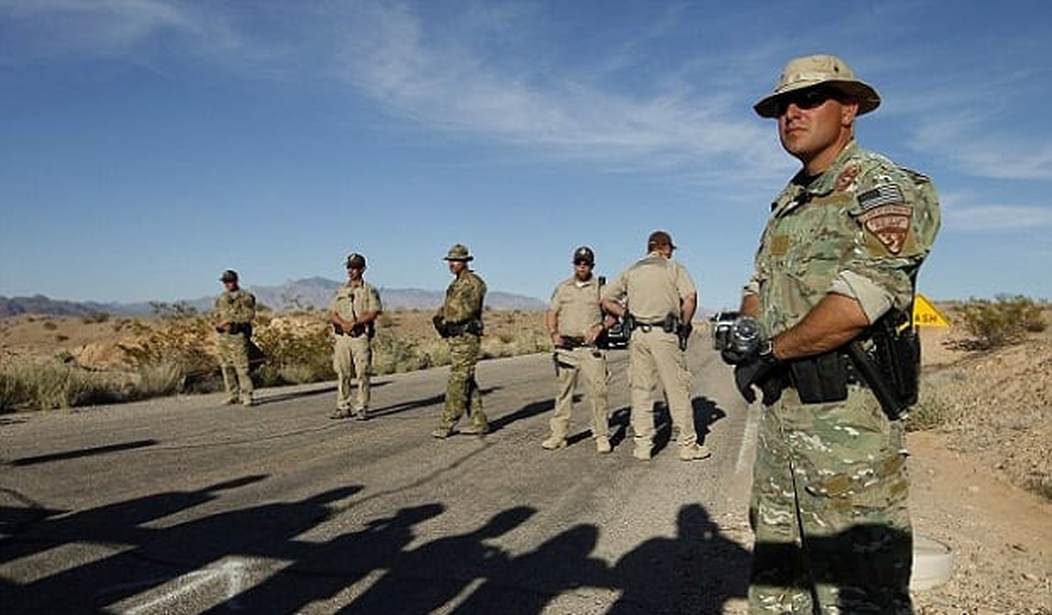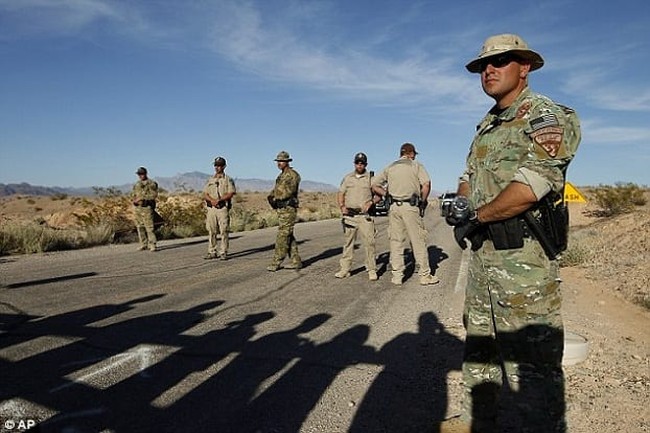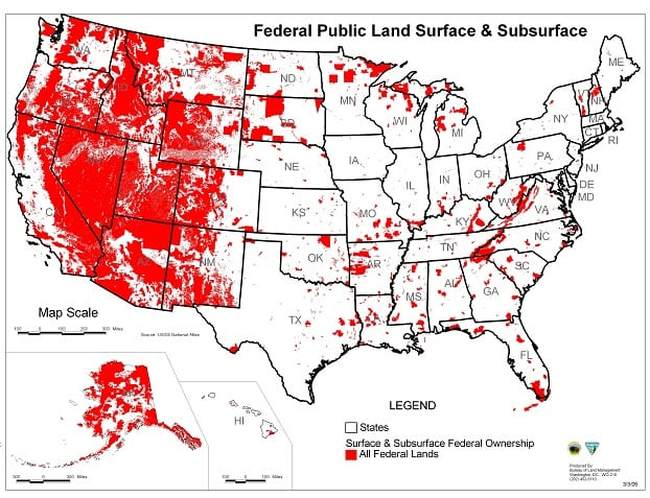The recent standoff between the paramilitary wing of the US Bureau of Land Management and Nevada rancher Cliven Bundy is simply bringing to the surface a long standing controversy between BLM, USDA, and other federal agencies and ranchers and miners in the West. This is not new. It is merely a continuation of the Sagebrush Rebellion that began under the regime of the odious James Earl Carter.
As in so many other cases, the root cause of the problem is a federal government that is imperious, overbearing, and has ceased to remember that it exists as a servant of the people, not as their master or jailer. If you live in the Eastern half of the nation you may be scratching your head over why federal land ownership is a big deal. If you live out West you confront the problem every day:
Federal lands in the American West are not only poorly managed, the produce, in true federal fashion, deficits instead of profits:
The BLM’s net outlays in fiscal 2011 were $1.5 billion.22 BLM lands produce about $4 billion in annual revenues, but almost all of the revenues come from less than 1 million acres of land, mostly from coal in Wyoming’s Powder River Basin and oil and gas in parts of Alaska. The remaining 99 percent of BLM lands are a burden on federal taxpayers, but they needn’t be if they were managed efficiently and charges were adjusted to optimize revenues.
(As an aside, one can’t help but note the role coal revenues play in the BLM resource picture and be reminded that the administration has essentially declared jihad against the use of coal.)
According to the Congressional Western Caucus, federal lands they actually work to the detriment of contiguous states and localities.
The federal government is the largest landowner in the United States, controlling almost1/3 of the entire land mass of the United States—an area more than six times the size of California. Over 90 percent of federal land is located in western states. The vast majority of these federal lands were set aside with the understanding that they would be managed for multiple use which would include grazing, recreation, conservation, and sensible natural resource development. However, Congress imposed laws and regulations that in many cases are unreasonable and burdensome. As a result, managing federal lands costs the American taxpayer billions of dollars a year more than tourism revenue can possibly produce. Inexplicably, the federal government continues to spend hundreds of millions of dollars each year to acquire additional land. An area larger than the size of Florida has been added to the federal estate since Kennedy administration.
One of the often overlooked effects of continued massive federal land ownership is the impact on public education in the West. Even though state and local taxes of western states, as a percentage of personal income, are as high as or higher than other states, there is a persistent shortfall in funding for public education. Part of this is attributed to population growth. An even larger factor in education funding problems for western states is their inability to generate tax revenue due to the vast amounts of federal lands within their jurisdiction. Since public education is heavily dependent on state and local property taxes, western states are suffering.
There is a certain irony in having a Congressional caucus decrying laws passed by Congress. For instance:
BLM’s policies create bad incentives not just for the users of federal lands, but also for BLM managers. The rules for the share of fees that can be retained by the BLM, for example, are not consistent. At various times in recent history, the BLM has been allowed to keep 25 percent of timber revenues collected in western Oregon but none elsewhere. It can keep 50 percent of grazing revenues, but no recreation revenues, except in a few locations where it can keep 100 percent. The BLM is allowed to charge 100 percent of fair market value for coal, oil, gas, and timber, but the fees it can charge for hardrock minerals (other than coal), grazing, and recreation are regulated by Congress and are usually well below market value. Following its incentives, the agency tends to focus its attention on resources that produce revenues it is allowed to keep but neglects other resources.
A related problem is that special interest groups have persuaded Congress to give them a share of BLM revenues, and they lobby hard to keep those privileges. For example, in most places counties receive 5 percent of BLM revenues, but in western Oregon they have historically received 50 percent of BLM timber revenues. When BLM timber sales declined by nearly 90 percent in the early 1990s (partly in response to the listing of the northern spotted owl as a threatened species), the western Oregon counties persuaded Congress to nonetheless maintain payments at high levels. The result is that today the BLM collects about $20 million a year from timber sales in western Oregon, but Congress pays about $100 million a year to manage those forests, plus another $100 million a year to the counties in the region.
In addition to bad policy, the BLM has attracted managers who look upon the federal lands as their personal fiefdoms to do with as they see fit. BLM managers have used the Endangered Species Act as a cudgel to curtail or forbid off road recreational activity and ranching is large areas. In 2004, the BLM aggressively pushed to have law enforcement authority on highways that passed through federally owned land rather than having that function performed by state and county police. This would not only have wildly increased the power of the BLM but it would have created a new revenue stream for them—fines from traffic violations.
This phenomenon was summed up neatly in an unrelated essay by Theodore Dalrymple:
There is, as every petty official knows, a great deal of pleasure to be had from the obstruction of others, especially if they appear to be more fortunate, better placed, richer, or more intelligent than oneself. There is a pleasure in naysaying, all the greater if the naysayer is able to disguise from the victim the fact that he is not only doing his duty but gratifying himself. Indeed, there are many jobs, meaningless in themselves, in which the power to say no is the only non-monetary reward.
In short, large parts of the West are essentially a powder keg waiting to become the next Ruby Ridge because of the intransigence of the federal government. Free men can only be pushed so far.
Last Friday, state officials from across the West met to hammer out a strategy for achieving the most logical resolution of the problem, the divestment of lands from federal control and handing them over to the state.
Utah has led a legislative charge to demand relinquishment of title to certain lands that exclude national parks and wilderness study areas, reports the Deseret News in Salt Lake City.
The “Transfer of Public Lands Act,” signed into law by Utah Gov. Gary Herbert in 2012, set the stage for a formal showdown with the government by demanding action under threat of lawsuit, the newspaper reports. Other states are exploring similar options.
The reason for large scale federal ownership of lands disappeared with the accession of Alaska into the Union. Today it is a source of corruption, cronyism, and influence peddling that is able to mask huge operating deficits through the mineral royalties derived from a minuscule portion of its portfolio. The BLM, and associated agencies, have shown no evidence of a desire to cooperate with the people who live near federal lands, rather they treat them with the contempt an occupying army would show a subjugated population. The Congress must act to remedy this before the situation leads to bloodshed.















Join the conversation as a VIP Member